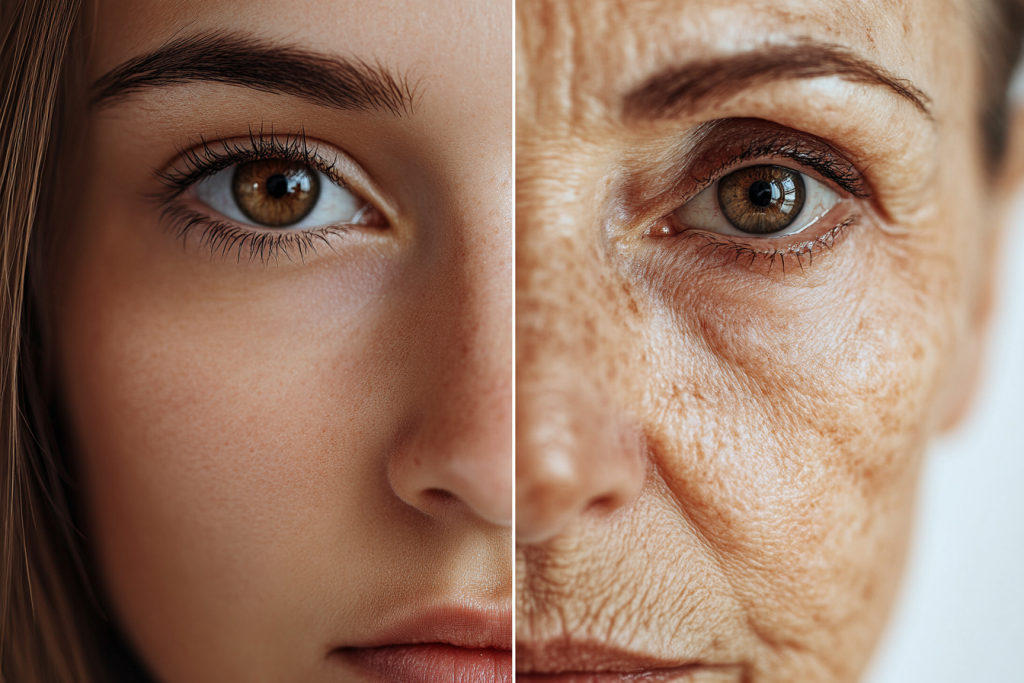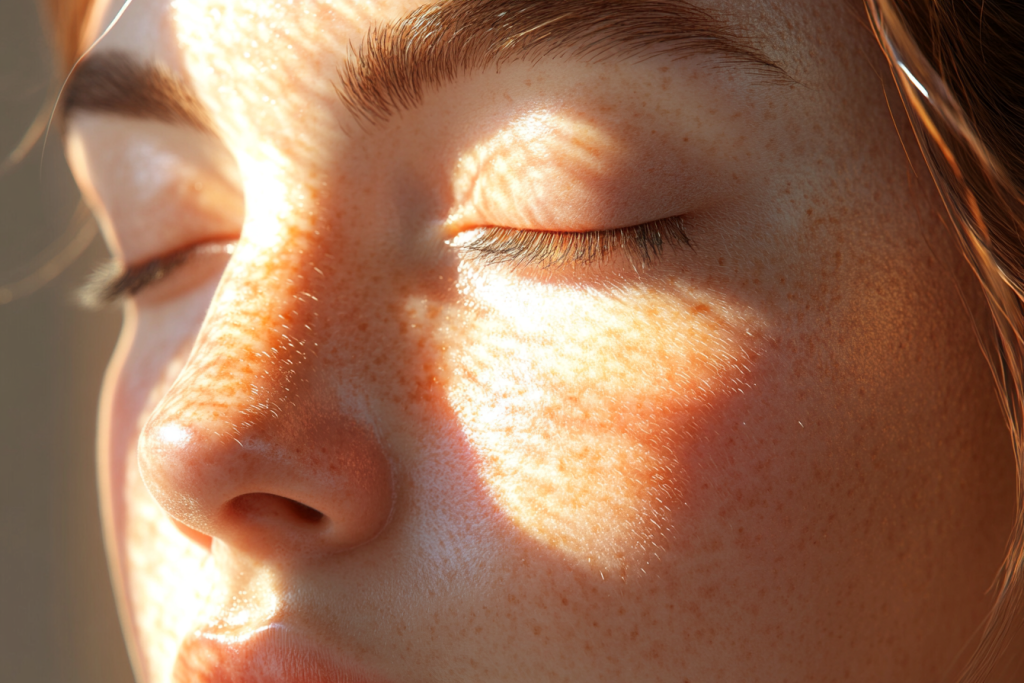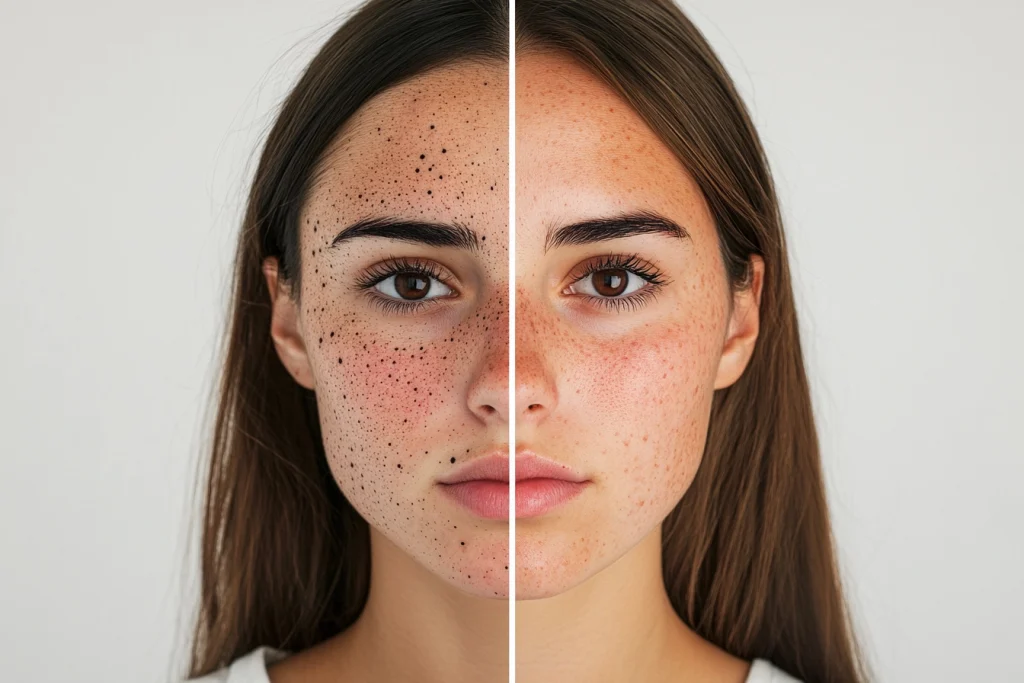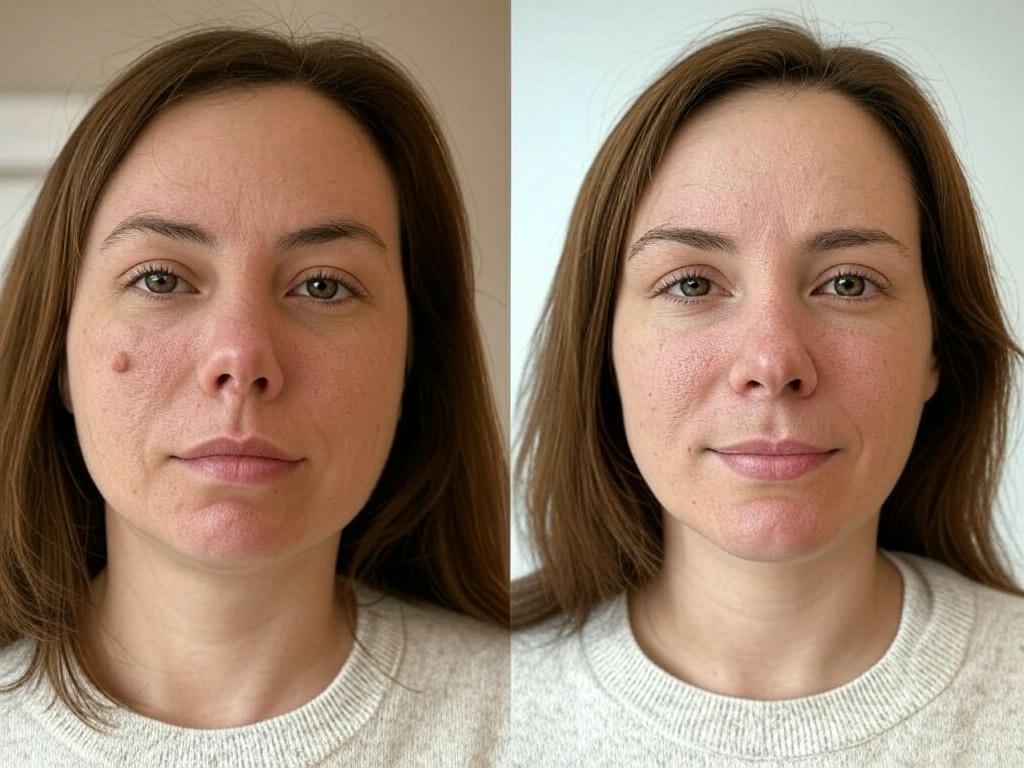Why Bleaching Agents Harm Your Skin
Many skincare products claim to reduce dark spots by using bleaching agents. While they may work temporarily, these products often destroy the melanocyte cells responsible for producing melanin, leading to long-term skin damage.
Another common misconception is that hyperpigmentation is solely caused by sun exposure. This belief has led to widespread use of SPF in nearly all moisturizers and facial creams, with claims that avoiding the sun is necessary for maintaining an even skin tone. Some even suggest that dietary sources alone provide sufficient vitamin D, which is far from the truth.

How Aging Impacts Skin Pigmentation
If you compare a younger person’s skin to that of someone over 35, you’ll notice that hyperpigmentation is almost non-existent in youth. As we age, the number of melanocyte cells decreases significantly, making dark spots more common.
Melanin production is largely influenced by vitamin D, which is synthesized when the skin is exposed to sunlight. Younger individuals have a higher concentration of melanocytes, allowing for more efficient melanin regulation. With age, this process slows down, leading to uneven pigmentation.

Vitamin D’s Role in Skin Tone Balance
Vitamin D plays a crucial role in protecting the skin from oxidative stress. Oxidation is one of the main triggers for melanin overproduction, alongside pollution and stress. Interestingly, melanin itself is a powerful antioxidant that helps shield DNA from damage caused by UV radiation.
When the skin is exposed to sunlight, melanin production increases, resulting in a natural tan that protects against excessive UV exposure. However, this also means that darker skin filters UV rays more effectively, reducing vitamin D production. This delicate balance highlights the importance of maintaining optimal vitamin D levels.

Debunking Vitamin D Research Myths
There is scientific evidence suggesting that vitamin D can regulate melanocyte activity, but studies on this topic often produce mixed results. A major reason for this inconsistency is the outdated recommended daily allowance (RDA) for vitamin D, which is set at only 600 IU.
Many studies base their findings on these low doses, making it difficult to observe significant effects. In reality, therapeutic doses of vitamin D often require much higher intake—closer to 10,000 to 20,000 IU daily. Research on vitiligo, a condition characterized by pigment loss, suggests that high doses of vitamin D3 (20,000–30,000 IU per day) can significantly improve skin pigmentation.
Natural Ways to Regulate Melanin
If you want to manage hyperpigmentation effectively, the key is to maintain sufficient vitamin D levels. However, the common advice of avoiding sunlight and using heavy sunblock can lead to vitamin D deficiency, exacerbating pigmentation issues.
To restore balance, it’s important to:
- Increase vitamin D intake (10,000–20,000 IU per day)
- Support the body’s antioxidant defense system
- Consume high-quality proteins and essential minerals (zinc, copper, iodine)
- Include vitamin C, vitamin E, and B vitamins in your diet

Yogurt: A Simple Fix for Dark Spots
For a quick and effective solution, a simple home remedy using plain, unsweetened yogurt can help improve skin tone.
How to Use Yogurt for Dark Spots
- Choose organic, grass-fed yogurt for best results.
- Apply a thin layer to the affected areas.
- Leave it on for about five minutes.
- Rinse thoroughly.
- Repeat once to three times a week, depending on severity.
Yogurt contains lactic acid, a gentle exfoliant that breaks down dead skin cells responsible for discoloration. Unlike harsh chemical peels, lactic acid in yogurt is mild and safe for regular use.
Boosting the Remedy with Turmeric
For enhanced effects, add a small pinch of turmeric to the yogurt before applying. Turmeric is a powerful antioxidant that helps reduce oxidative stress and inflammation, accelerating skin renewal.
Maintaining Skin pH with Natural Care
Some may worry about using acids on their skin, but the skin’s natural pH is slightly acidic. Using mild exfoliants like lactic acid helps maintain this balance. In contrast, sunblock chemicals and excessive alkalizing agents can disrupt the skin’s protective barrier.
Smart Sun Exposure for Healthy Skin
Instead of completely avoiding the sun, aim for moderate, regular sun exposure without overexposure. Your body is designed to interact with sunlight, and maintaining healthy vitamin D levels is key to regulating melanin production.
By following these steps—boosting vitamin D intake, supporting antioxidant defenses, and using gentle exfoliating remedies—you can naturally achieve an even, healthy skin tone without resorting to harsh bleaching treatments.



